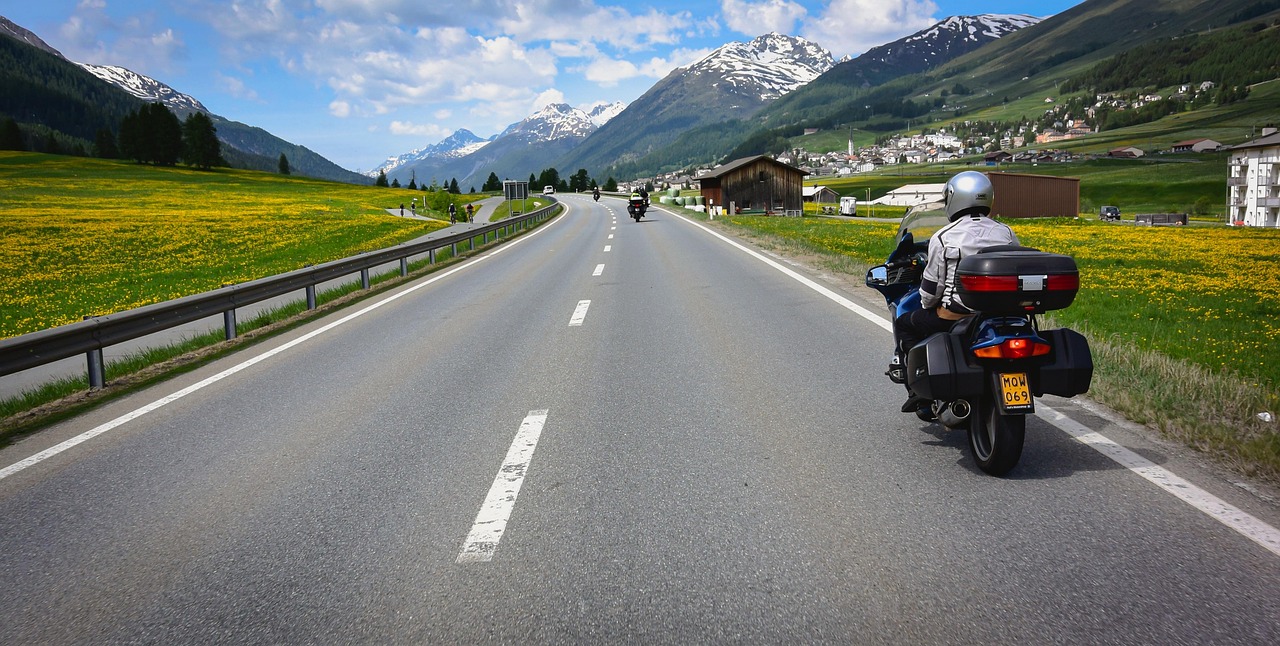Motorcyclists always look for safe and efficient ways to navigate traffic, especially when conditions are slow or congested. That’s where practices like lane splitting and lane filtering come into play.
These topics have sparked plenty of discussion—and even controversy—among riders, lawmakers, and the general public. But no matter where you stand, understanding the legality, risks, and proper techniques behind these maneuvers is essential for staying safe and compliant on the road.
What Is Lane Splitting, and How Does It Differ from Filtering?
Let’s start with the basics. Lane splitting refers to the act of a motorcycle riding between lanes of stopped or slow-moving cars, usually on multilane roads, according to the National Highway Traffic Safety Administration.
Lane filtering, by contrast, happens when a motorcycle moves between vehicles that are stopped—often at an intersection—to reach the front of the line before the light turns green.
While they might look similar, these two practices serve different purposes. Lane splitting helps maintain forward motion through traffic, whereas lane filtering is more about strategic positioning during a stop. Getting these definitions clear is the first step toward mastering lane-splitting safety tips and riding legally wherever you go.
Can Motorcycles Ride Between Cars in Traffic?
The answer depends entirely on where you’re riding. As of 2025, California remains the only U.S. state where lane splitting is explicitly legal statewide, with formal recognition by the California Vehicle Code (CVC §21658.1) and guidelines issued by the California Highway Patrol (CHP).
Meanwhile, Utah and Arizona have passed legislation allowing lane filtering under specific conditions, typically at intersections when traffic is stopped and the posted speed limit is 45 mph or less.
In most other states, however, lane splitting is either explicitly prohibited or not addressed in the law. That leaves riders in a gray area—and potentially at risk for citations or liability if something goes wrong. So, if you’re wondering whether it’s okay to drive between cars, the safest bet is to consult your state’s traffic code before making a move.
Is Lane Splitting Best Practice or Risky Behavior?
This is one of the most hotly debated topics in motorcycle safety circles.
On one hand, many riders argue that lane splitting can reduce the risk of rear-end collisions in stop-and-go traffic—a position supported by a 2015 study from the University of California Berkeley, which found that lane-splitting motorcyclists were less likely to be struck from behind .
On the other hand, critics warn that it increases the risk of sideswipe accidents and aggressive reactions from drivers unaccustomed to sharing lanes. These risks are especially high when lane splitting is done at unsafe speeds or without situational awareness.
From a safety standpoint, the reality lies somewhere in the middle. Lane splitting can be done safely—but only if it’s approached with responsibility, low speeds, and a high level of awareness. Following lane-splitting safety tips—like keeping your speed within 10-15 mph of surrounding traffic and steering clear of blind spots—is crucial for minimizing risk.
And let’s be clear: in states where lane splitting isn’t legal, attempting it isn’t just risky—it could carry legal consequences that no rider wants to deal with.
Motorcycle Riding Best Practices for Lane Positioning and Visibility
Even when lane splitting isn’t an option, solid riding fundamentals are always in play. There are a few best practices that can make a big difference in visibility and overall road safety.
First, maintain a safe buffer zone around your bike. Use your lane position to stay visible to drivers, and avoid spending time in blind spots. Simple techniques like using hand signals, avoiding the slick center of the lane, and scanning several seconds ahead can help you anticipate sudden lane changes or doors swinging open in heavy traffic.
According to the Motorcycle Safety Foundation (MSF), strategic lane positioning is one of the most effective ways to reduce crash risk by improving visibility and reaction time.
These habits aren’t just helpful—they’re essential, whether you’re filtering forward at a red light or riding through freeway congestion.
What Are Some Motorcycle Tips That All Riders Should Know?
No matter how long you’ve been riding, a mental checklist of safety techniques is never a bad idea. So what are some motorcycle tips every rider should keep top of mind?
Start with the gear. Wearing a DOT-approved helmet reduces the risk of head injury by 69% and death by 42%, according to the CDC.
Always wear protective equipment—even for short trips. Before you ride, check your tire pressure, lights, and brakes. Use both the front and rear brakes together for controlled, balanced stops. Ride defensively, and always assume that nearby drivers don’t see you. Look ahead through corners, not down at the road.
Above all else: know your limits. Just because a maneuver is possible doesn’t mean it’s smart in every situation. As with all advanced riding techniques, lane splitting should only be added to your skill set once you’re confident and ready.
Frequently Asked Questions (FAQ)
Is lane splitting legal in my state?
Lane splitting is explicitly legal only in California, where it is recognized in state law and supported by safety guidelines, according to the California Highway Patrol 1. Utah and Arizona permit lane filtering under specific conditions, but most other states either prohibit or do not address lane splitting in their traffic codes, according to the American Motorcyclist Association.
What’s the difference between lane splitting and filtering?
Lane splitting refers to riding between lanes of slow-moving or stopped traffic, while lane filtering typically involves maneuvering between fully stopped vehicles, usually at intersections. The two terms are often confused but have different applications and legal frameworks, according to the National Highway Traffic Safety Administration (NHTSA).
Is lane splitting safe?
When executed with caution, lane splitting can reduce the chance of being rear-ended in traffic, according to a 2015 study conducted by UC Berkeley’s SafeTREC research center. The study found that lane-splitting motorcyclists were less likely to suffer head or torso injuries in the event of a collision.\
Can I get a ticket for lane splitting?
Yes. In states where lane splitting is not explicitly legal, riders may be cited for unsafe lane changes, reckless driving, or other traffic violations, according to the American Motorcyclist Association 2. It’s crucial to check local traffic laws before engaging in the practice.
What speed is safe for lane splitting?
The California Highway Patrol recommends that riders do not lane split at speeds exceeding 10-15 mph more than surrounding traffic, and discourages the practice entirely at speeds over 50 mph. These guidelines are meant to reduce the risk of collisions and improve rider safety, according to the CHP 1.
Do I need special training to lane split?
Although no additional license endorsement is required, lane splitting demands strong situational awareness and control. The technique should be practiced only by experienced riders, according to the Motorcycle Safety Foundation (MSF), which offers advanced skills training and hazard recognition strategies.
What gear should I wear when lane splitting?
Full protective gear—including gloves, armored jackets, pants, and boots—provides additional protection in close quarters and unpredictable traffic environments.
Wearing a DOT-approved helmet can reduce the risk of head injury by 69% and the risk of death by 42%, according to the Centers for Disease Control and Prevention (CDC).
Does lane splitting help with traffic congestion?
Lane splitting has the potential to reduce traffic congestion and shorten travel times without increasing crash risk when performed responsibly. This conclusion is supported by research from European traffic agencies and U.S.-based safety institutions, according to the OECD/International Transport Forum.
Lane Splitting Is a Choice—Make It a Smart One
Lane splitting and filtering are not inherently dangerous—but they are high-responsibility actions that demand legal awareness, technical skill, and sound judgment. So if you’re wondering whether lane splitting is best practice, the real answer depends on how, where, and why you’re doing it.
In places where it’s legal and done properly, lane splitting can be a valuable tool for motorcyclists. But no matter the location, taking time to understand lane-splitting safety tips, obeying traffic laws, and following motorcycle best practices will help you become a safer, more respected rider.
Whether you’re weaving through traffic in California or riding conservatively in a no-split state, remember this: your safety depends on more than your riding ability—it depends on the decisions you make every mile along the way.

